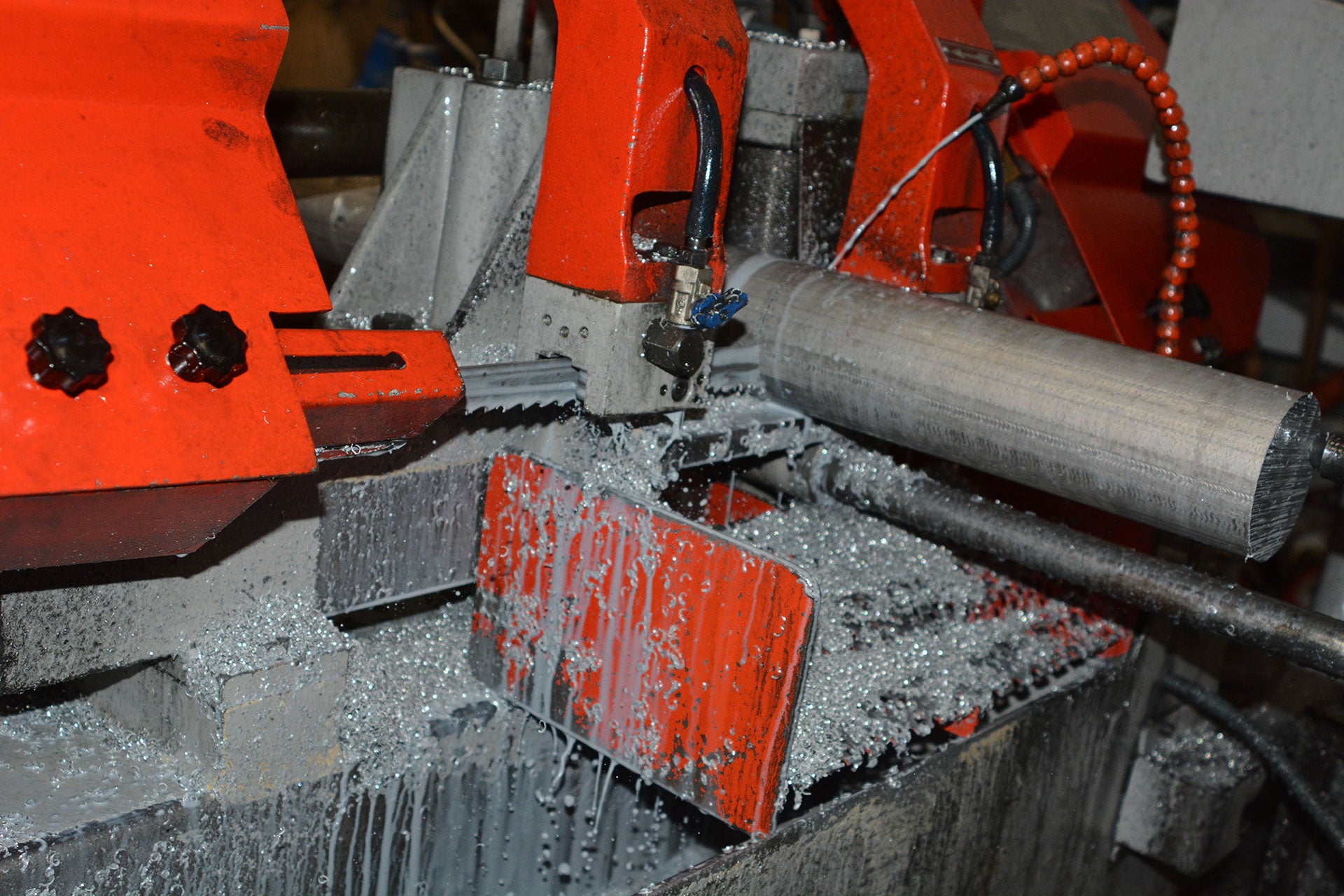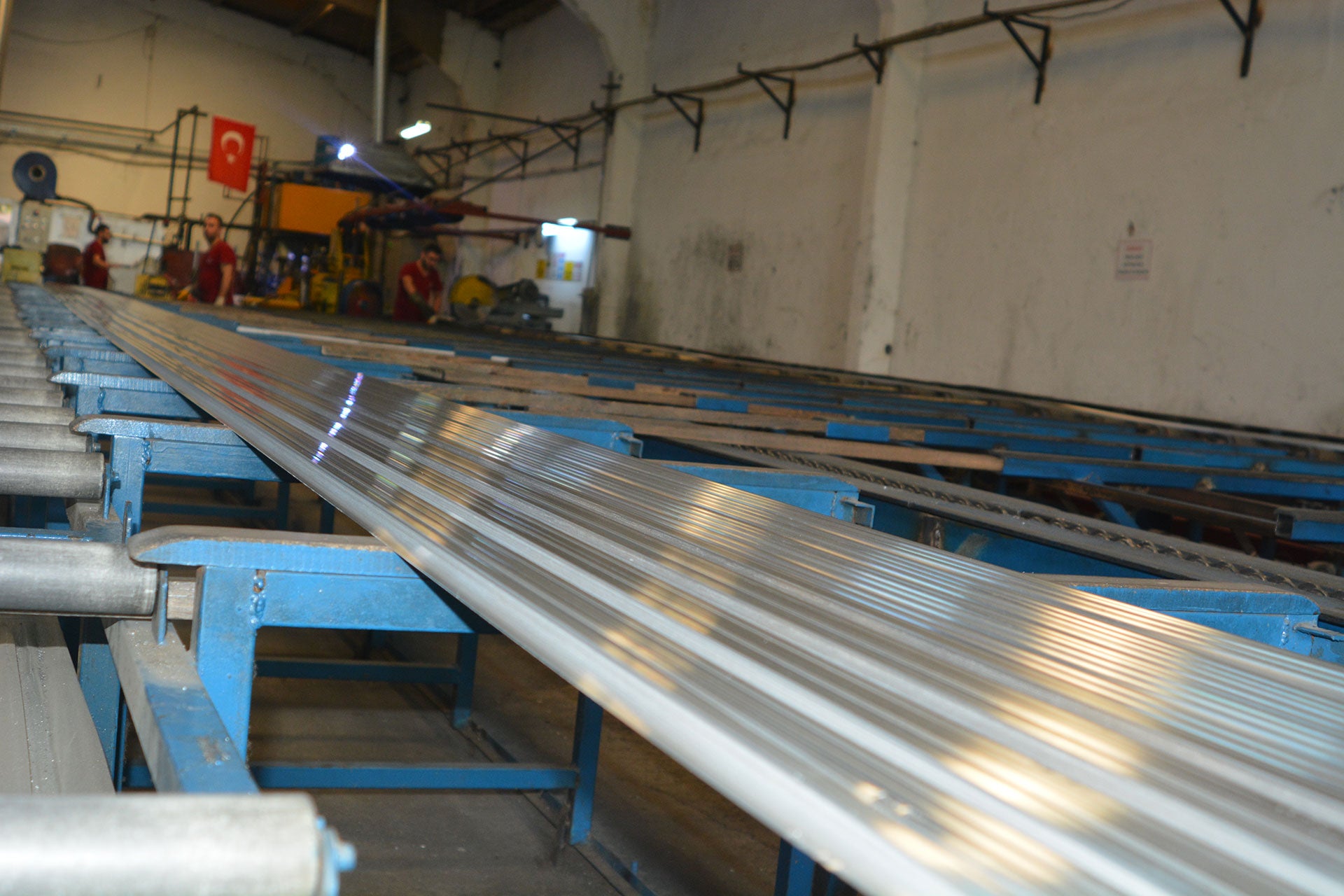PRODUCTION
Aluminum Extrusion Profiles Manufacturing Process
Learn about the production stages of durable and aesthetic aluminum profiles.
1. Raw Material Supply
The main material used in the production of aluminum extrusion profiles is aluminum alloys. Alloys are obtained by mixing aluminum with various metals, resulting in different mechanical properties. 6000 series aluminum alloys are generally preferred for production.
2. Preparation of Aluminum Billets
Aluminum alloys are cast in high-pressure die-casting machines in the form of cylindrical ingots called billets. These billets form the raw material required for the extrusion process. After casting, the billets are heat-treated by baking to remove the oxide and dirt layer on the surface.
3. Heat Treatment and Homogenization
The billets are heated to a specific temperature using a heat treatment called homogenization. This process ensures a homogeneous distribution of the metal components in the internal structure and improves the mechanical properties of the material. This process is typically carried out in the range of 450-500°C.
4. Extrusion Process
Homogenized billets are placed in the extrusion press. During the extrusion process, the billet is forced through a die under high pressure, taking the shape of the desired profile. This process occurs in the following steps:
- Heating: The billets are heated to approximately 450-500°C before the extrusion process begins.
- Pressure Application: The heated billet is pushed out of the die with the help of a press, and a profile is formed by taking the shape of the die.
- Cooling: The extruded profile is rapidly cooled with water or air to allow it to harden.
5. Cutting and Cooling
The profiles coming out of the extrusion are cut to the desired dimensions and placed on cooling belts for complete cooling. During the cooling process, the straightness and surface quality of the profiles are checked.
6. Heat Treatment and Hardening
The cut profiles are then subjected to heat treatment. This process is done to improve the mechanical properties of the profile. Heat treatment processes, commonly called T5 or T6, are applied. These processes increase the strength and hardness of the profile.
7. Surface Treatments
Aluminum decorative profiles are subjected to various surface treatments to achieve an aesthetic appearance:
- Anodizing: Corrosion resistance is increased by forming a durable oxide layer on the aluminum surface.
- Electrostatic Powder Coating: The profiles are coated with electrostatic powder paint, offering a variety of color and pattern options.
- Coating and Plating: Decorative effects are achieved by applying different coating materials.
8. Quality Control and Packaging
The produced profiles undergo quality control tests. Properties such as dimensions, surface quality, and strength are checked. Profiles that have passed quality control are packaged with appropriate packaging and prepared for shipment.
Conclusion
Aluminum extrusion decorative profiles are preferred in many areas due to their durability, lightness, and aesthetic appearance. Meticulous processes at every stage of production ensure high-quality and long-lasting profiles.


